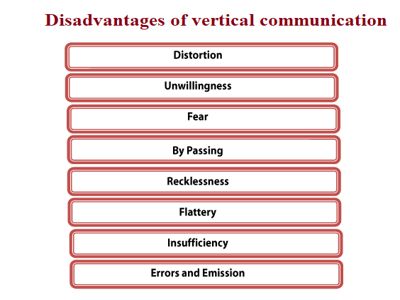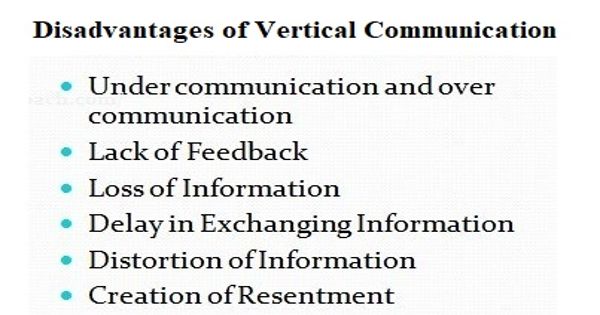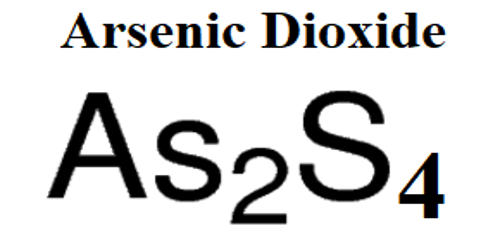The official communication that takes place between superiors and subordinates is known as vertical communication. This is the most common form of communication in an organization. The biggest disadvantage of vertical communication is that since the flow of orders is from top to bottom the lower-level employees may feel neglected and may not be motivated to work hard which in turn will result in inefficiency creeping in their work resulting in the loss for the company.
Disadvantages of vertical communication –
Though organizations enjoy many advantages from the vertical pattern of communication, it is not free from limitations. In spite of having many advantages of vertical communication, there are some disadvantages which are given below:
- Delay process
The vertical communication system is a delayed process. It occurs through a series of steps from one level to the next. It maintains the long chain of command in large organizations to exchange information. This causes delays in the communication process.
- Disturbing discipline
In this communication, if the boss’s role of direction is seen by doubtful eyes by the subordinates, the chain of command and discipline may be broken.
- Efficiency reduces
In many cases, vertical communication becomes ineffective as the sender and the receiver differ in their respective positions or designations. The downward direction of vertical communication is commanding in nature. So, there is no opportunity for the workers to become efficient.

- Loss or Distortion of information
Information may be fabricated by the employees to maintain a lengthy channel. When vertical communication takes place through a long organizational hierarchy, information losses its original shape and becomes distorted. So, through his communication information may lose its originality.
- Reduces relationships
By this communication system relationship between superior and sub-ordinate may be reduced due to inability and inefficiency. Sometimes subordinates show reluctance to communicate with their respective superiors due to fear, distrust, or threat.
- Slowness system
Vertical communication is the slowest communication method because it requires passing through the various levels of an organization. For this, it may become ineffective.
- Negligence of superiors
In this communication, superiors can neglect to send messages to their subordinates. In some cases, the superiors become negligent to send messages to these subordinates thinking that closeness with subordinates will hamper their status, dignity, and importance.
Finally, we can conclude that in spite of having the above-mentioned drawbacks, organizations extensively rely on vertical communication. Therefore, the concerned parties of vertical communication should be sincere, efficient, and careful enough in exchanging information among them.
Information Source:















